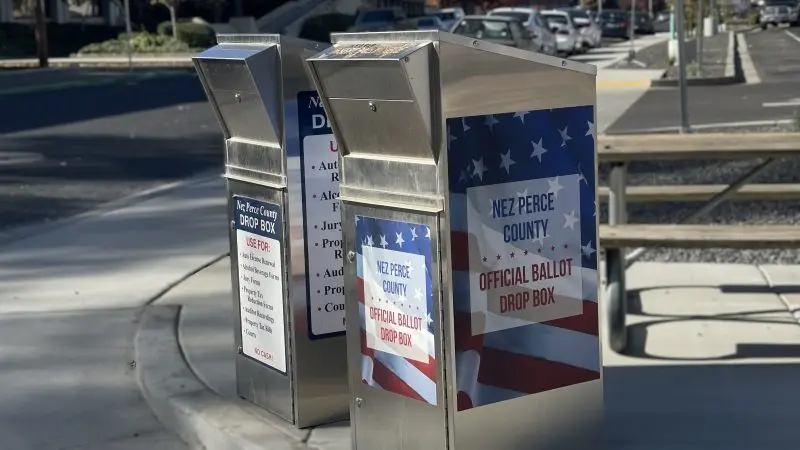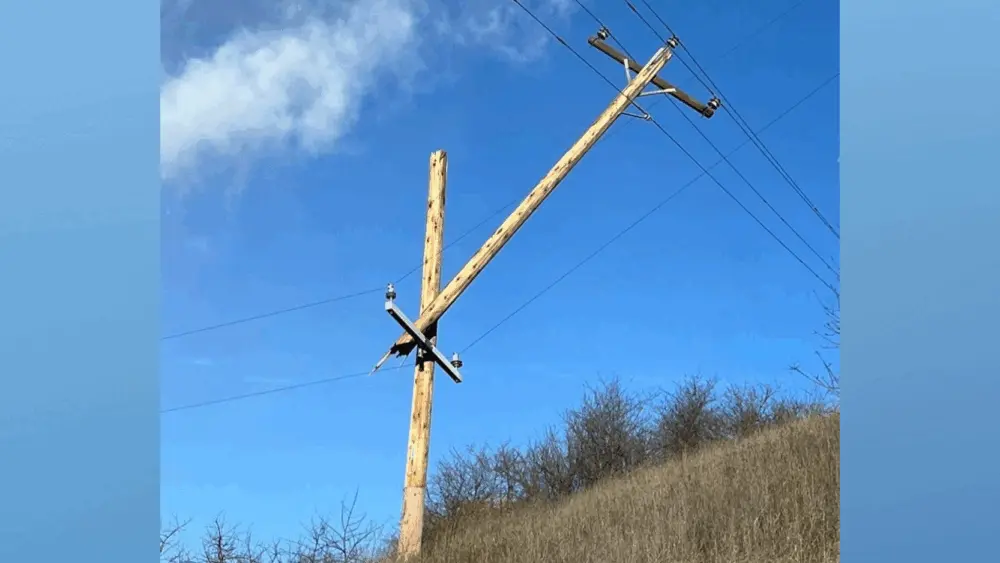Originally posted on IdahoEdNews.org on November 2, 2025
BOISE, ID – Idaho voters will consider more than $159 million in school-related ballot measures when they vote on Tuesday.
The school district asks range from a $67,000 supplemental levy in the Three Creek School District to a $26 million bond for new school buildings in the Gooding School District.
Also, four plant facilities levies on the ballot would largely fund school maintenance projects.
EdNews scoured each of the ballots in Idaho’s 44 counties to compile a list of the ballot measures statewide.
In-person voting is from 8 a.m. to 8 p.m. on Election Day, Nov. 4.
For more information on how and where to vote visit voteidaho.gov
The tax burdens listed below are estimates and may change, due to factors such as shifting market values and how a district allocates its state tax relief dollars. The numbers below do not factor in how property tax relief could reduce property owners’ tax bill per $100,000.
Learn more about how bonds and levies work here.
If your school district is running a ballot measure and you do not see it listed, please email emma@idahoednews.org and we will update the story.
Bonds
Gooding
What: A $26.4 million, 20-year bond.
What’s at stake? The bond would pay for renovations to Gooding’s elementary, middle and high schools along with expanding the Vo-Ag building.
Impact: The bond would cost taxpayers $214 per $100,000 of assessed value. See sample ballot here.
Fremont County
What: A $17 million, 20-year bond.
What’s at stake? The bond would pay for a performing arts addition to South Fremont High School, including an auditorium that would seat 999, a classroom to be used primarily by the drama department, bathrooms, and other related facilities.
The high school’s current auditorium seats about 300 and the district has outgrown it, said Superintendent Brandon Farris. A “grassroots movement” of patrons and community members got the bond on the ballot, Farris said.
“Our patrons that have pushed for it,” Farris said. “Just a bigger nicer venue to showcase our students.”
The district plans to rent out the facility when possible for community theater productions and concerts.
Impact: The bond would cost taxpayers $30.28 per $100,000 of taxable assessed value. See sample ballot here.
Camas County
What: A $1.75 million, 20-year bond.
What’s at stake? The bond would be used to fund the repair, renovation or replacement of existing unsafe school facilities.
Impact: The bond would cost taxpayers $46 per $100,000 of taxable assessed value. See sample ballot here.
Plant facilities levies
Four districts are seeking plant facilities levies — adding up to more than $9.7 million — for school facility maintenance and updates. They are listed alphabetically below.
Filer
What: A $3 million, 10-year levy.
What’s at stake? The funds would go into a reserve fund for future building projects.
Impact: The levy would cost taxpayers $30 per $100,000 of taxable assessed value. See sample ballot here.
Kimberly
What: A $5 million, 10-year levy.
What’s at stake? The levy would pay for any non-routine maintenance like HVAC or flooring repairs. The funds cover the lease-to-own payments on a 35-acre plot of land. The district is about halfway through paying off the property, said Superintendent Luke Schroeder. The payment is about $100,000 per year.
The plant facilities ask is an increase of $200,000 per year from the expiring plant facilities levy. The increase was prompted by rising materials costs for maintenance projects over recent years, Schroeder said.
Impact: The levy would cost taxpayers $42 per $100,000 of taxable assessed value. See sample ballot here.
Murtaugh
What: A $1.75 million, 10-year levy.
What’s at stake? The levy replaces an existing levy for the same amount, passed in 2017. The funds, about $175,000 per year, would purchase school buses and pay for general district maintenance.
Superintendent Rod Jones said the levy is a key part of remaining in a good place financially, especially for a district that has never had a supplemental levy.
“Being able to maintain what we have and build upon that for the future would be kind of our goal,” Jones said.
The district is holding an open house on Oct. 17 at Murtaugh High School from 5 to 7 p.m. for patrons to ask questions about the levy.
Impact: The levy would cost taxpayers $71.32 per $100,000 of taxable assessed value, a decrease of $.08 from the expiring levy. See sample ballot here.
Teton
What: A $2.6 million, 4-year levy.
What’s at stake? The levy, which voters have renewed every five years since 1985, would support facilities and technology improvements, according to a district Facebook post. The levy is for $520,000 next year and would increase $20,000 each following year for four years, reaching $600,000 in the final year.
Impact: The levy would cost taxpayers $8.20 per $100,000 of taxable assessed value the first year and would increase $.32 per year each following year. The current plant facilities levy will expire in 2026 and costs taxpayers $7.88 per $100,000 of taxable assessed value. See sample ballot here.
Supplemental levies
Twenty-six districts are seeking supplemental levies — adding up to about $101 million. The levies largely pay the salaries and benefits of staff, above state reimbursements. Levies also commonly cover extracurricular activities. They are listed alphabetically below.
Basin
What: A $1.1 million, two-year levy.
What’s at stake? The levy would largely pay for athletics along with support staff salaries and benefits, preschool and kindergarten, facilities maintenance and school safety staff.
Impact? The levy would cost taxpayers $54.09 per $100,000 of taxable assessed value. See sample ballot here.
Blaine County
What: A $7.7 million, two-year levy.
What’s at stake? The levy would largely fund special education expenses beyond what the state and federal government reimburse. The levy also would fund all-day kindergarten, preschool, summer school, school resource officers and cybersecurity enhancements.
Impact: The levy would cost taxpayers about $16.35 per $100,000 of assessed value. See sample ballot here.
Clearwater Valley
What: A $811,989, one-year levy.
What’s at stake? The levy would largely cover staff salaries and benefits. The levy would also pay for extra and co-curricular activities, all-day kindergarten, the elementary school library, and curriculum and technology, among other general operating expenses.
Impact: The levy would cost taxpayers about $115 per $100,000 of assessed value. See sample ballot here.
Filer
What: A $1.3 million, two-year levy.
What’s at stake? The majority of the levy, $520,000 per year, would pay for staff salaries and benefits. The rest would go to extracurricular activities and supplies.
Impact: The levy would cost taxpayers $65 per $100,000 of taxable assessed value. See sample ballot here.
Garden Valley
What: A $1 million, two-year levy.
What’s at stake? The levy largely would pay for staff salaries and benefits along with extracurricular activities and transportation, full-day kindergarten, classroom support and special education.
Impact: The levy would cost taxpayers $36.33 per $100,000 of taxable assessed value. See sample ballot here.
Genesee
What: A $1.85 million, one-year levy.
What’s at stake? The funds would largely pay for staff salaries and benefits, at $589,000 per year. The second-largest line item is special education, at $216,00 per year. The rest would go to extracurricular activities, technology, maintenance and transportation.
Impact: The levy would cost taxpayers $402 per $100,000 of taxable assessed property value. See sample ballot here.
Grangeville
What: A $3.3 million, two-year levy.
What’s at stake? The levy would largely pay staff salaries and benefits. The levy would also fund extra and co-curricular activities, all-day kindergarten, curriculum and technology and other operating expenses.
Impact: The levy would cost taxpayers $180 per $100,000 of taxable assessed value. See sample ballot here.
Kellogg
What: A $7 million, two-year levy.
What’s at stake? The levy would largely pay staff salaries and benefits at nearly $1 million per year. The levy also would pay for utilities, extracurricular activities, classroom supplies, technology/ support, and custodial services.
Impact: The levy would cost taxpayers $237.17 per $100,000 of taxable assessed value. That is an increase of $21.80 from the expiring supplemental levy. See sample ballot here.
Kendrick
What: A $1.5 million, two-year levy.
What’s at stake? The levy would largely pay for staff salaries and benefits at $535,000 per year. The rest of the funds would pay for security and technology, maintenance and operations, transportation, supplies and curriculum, and extracurricular programs.
Impact: The levy would cost taxpayers $335.47 per $100,000 of taxable assessed value. The levy marks a $18.98 increase per $100,000 from the expiring supplemental levy. See sample ballot here.
Kimberly
What: A $1.6 million, two-year levy.
What’s at stake? The levy largely would pay for special education services at $400,000 per year. The rest would go toward activity travel and technology.
Impact: The levy would cost taxpayers $67 per $100,000 of taxable assessed value, the same as the expiring levy this district hopes to replace. See sample ballot here.
Marsh Valley
What: A $2.98 million, two-year levy.
What’s at stake? The levy would mostly pay for classified staff salaries and benefits, including classroom and library aides, bus drivers, custodians and food service workers. The levy would also pay for curriculum updates, extracurricular activities and special education services.
Impact: The levy would cost taxpayers $62.74 per $100,00 of taxable assessed value. See sample ballot here.
McCall-Donnelly
What: A $1.9 million, two-year levy.
What’s at stake? The levy largely would pay for transportation along with facility improvements, food services and special programs.
Impact: The levy would cost taxpayers $9.09 per $100,000 of taxable assessed value. See sample ballot here.
Middleton
What: A $4.95 million, two-year levy.
What’s at stake? The levy would largely pay for staff salaries and bengefits at over $800,000 per year. The levy also covers school resource officers, curriculum adoption, technology and building maintenance, among other expenses.
Impact: The levy would cost taxpayers $58 per $100,000 of taxable assessed value. See sample ballot here.
Minidoka County
What: a $2.98 million, two-year levy
What’s at stake? The funds would largely go to safety, security and technology along with equipment and furniture. The rest would go to maintenance and student learning resources.
Impact: The levy would cost taxpayers $127.30 per $100,000 of taxable assessed value. See sample ballot here.
Mountain Home
What: A $6.2 million, two-year levy.
What’s at stake? The levy would largely pay for staff salaries and benefits along with athletics, contracted services and transportation.
Impact: The levy would cost taxpayers $102 per $100,000 of taxable assessed value. See sample ballot here.
Nampa
What: A $33.6 million, two-year levy
What’s at stake? The levy would largely go to paying teachers and staff, with more than $7 million per year allotted for the purpose. The funds would also pay for curriculum, technology, activities and sports, fine arts, building security and transportation.
Impact: The levy will cost taxpayers $113.91 per $100,000 of taxable assessed value. See sample ballot here.
North Gem
What: A $700,000, two-year levy.
What’s at stake? The levy would largely pay for staff salaries and benefits, along with state health insurance, athletics and activities and classroom supplies.
Impact: The levy would cost taxpayers $159.72 per $100,000 of taxable assessed value. Taxpayers are expected to see a $9.85 reduction per $100,000 from the expiring levy. See sample ballot here.
Orofino
What: A $5.3 million, two-year levy.
What’s at stake? The levy would largely pay for staff salaries at benefits at $1.78 million per year. The rest would go toward maintenance and operations, extracurricular and athletic programs, and safety and security.
Impact: The levy would cost taxpayers $248.85 per $100,00 of assessed property value. See sample ballot here.
Salmon
What: A $1.07 million, two-year levy.
What’s at stake? The levy would largely pay for athletics at $150,000 along with vocational agricultural education, technology, music, and educational materials.
Impact: The levy would cost taxpayers $42.09 per $100,00 of assessed property value. See sample ballot here.
Shelley
What: A $1.65 million, two-year levy.
What’s at stake? The levy would largely pay for custodial and maintenance supplies and staff salaries. The funds would also pay for additional teachers and counselors, paraprofessionals and other contract staff along with coaching stipends and extracurricular travel.
Impact: The levy would cost taxpayers $60.48 per $100,000 of taxable assessed value. See a sample ballot here.
Sugar-Salem
What: A $900,000, two-year levy.
What’s at stake? The levy would largely pay for maintenance at $275,000 per year along with textbooks and technology.
Impact: The levy would cost taxpayers $67.60 per $100,000 of taxable assessed value. See a sample ballot here.
Three Creek
What: A $67,500, two-year levy.
What’s at stake? The levy would largely pay for staff at $30,000 per year. The rest would go to building maintenance.
Impact: The levy would cost taxpayers $101.63 per $100,000 of taxable assessed value. See sample ballot here.
Troy
What: A $1.99 million, two-year levy.
What’s at stake? The levy would largely pay for staff salaries and benefits at $520,000 per year. The rest of the funds would pay for district maintenance and operations and extracurricular and athletic programs.
Impact: The levy would cost taxpayers $328.79 per $100,000 of taxable assessed value. The levy would replace a levy that’s expiring in June of 2026. See sample ballot here.
Valley
What: A $600,00, two-year levy.
What’s at stake? The levy would largely pay for staff salaries and benefits at $270,000 per year. The rest would cover student travel that is not reimbursed by the state.
Impact: The levy would cost taxpayers $89.95 per $100,000 of taxable assessed value, the same as the expiring levy. See sample ballot here.
Wallace
What: A $3.7 million, two-year levy.
What’s at stake? The levy mostly would pay for staff salaries and benefits at $1.5 million per year. The rest of the levy pays for extracurricular activities and athletic programs along with transportation and food service.
Impact: The levy would cost taxpayers $222.35 per $100,000 of taxable assessed value. The levy is an increase of $21.37 per $100,000 from the expiring supplemental levy. See sample ballot here.
Weiser
What: A $1.5 million, two-year levy
What’s at stake? The levy would largely pay to support the district’s school lunch program at $200,000. The rest would pay for staff salaries and benefits to support, in part, athletics and full-day kindergarten.
Impact: The levy would cost taxpayers $86.01 per $100,000 of taxable assessed value. Click here to view a sample ballot.
Ed News data analyst Randy Schrader contributed to this story.





